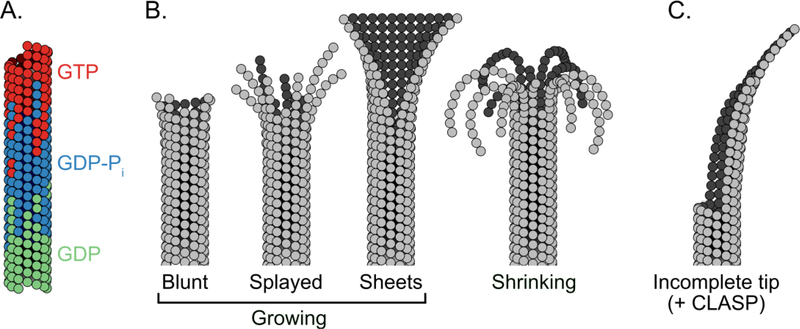Figure 2.
Structure and composition of the microtubule end. (A) Growing microtubule tips are composed of tubulin subunits in different nucleotide states. The very tip of the microtubule is composed of GTP-bound tubulin subunits (red). Subsequent GTP-hydrolysis results in a region proximal to the tip that is rich in GDP-Pi-bound tubulin (blue). Finally, phosphate release results in the body of the microtubule being composed mainly of GDP-bound tubulin (green). (B) Growing microtubule ends can adopt a variety of end structures due to their multi-protofilament nature. Individual microtubules can elongate independently by forming longitudinal interactions with incoming tubulin dimers, which may result in splayed protofilaments at the tip. Protofilaments can also form lateral interactions with adjacent protofilaments resulting in multi-protofilament, sheet-like structures. During shrinkage, lateral interactions between protofilaments are broken, resulting in highly splayed, disconnected and curled protofilaments at the ends of shrinking microtubules. (C) Microtubules grown in the presence of CLASP2α display curved ends, which may arise due to the ability of CLASP to stabilize incomplete end structures.

